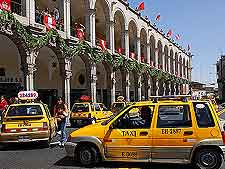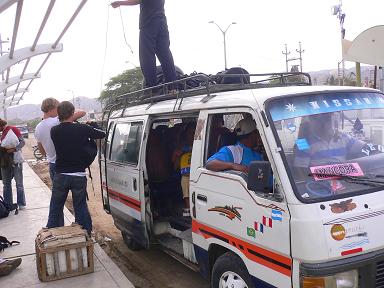Siemens: Picture the Future
Posted by Big Gav on April 21, 2010 - 9:11am in The Oil Drum: Australia/New Zealand
There have been plenty of plans to switch Australia to 100% clean energy floated in recent times (see Beyond Zero Emissions and Desertec Australia for some examples).
The latest entrant is from Siemens, with their "Picture the Future: Australia (Energy)" (pdf) report recommending Australian business and governments spend $60 billion on alternative energy initiatives.
The report says that to meet 2050 carbon emission targets, all road vehicles would need to be electrically powered and all electricity would come from a mix of wind, solar, geothermal, hydro and gas (along with carbon-capture coal, which is an unlikely component).
Siemens also recommends all buildings be made energy efficient and smart grids helping to match demand with supply. Large-scale energy storage is expected to enable solar power to take a dominant position and nearly all homes will have rooftop solar PV.
Siemens also proposes to link Western Australia to the eastern seaboard grid system through a DC transmission network, enabling the use of large-scale solar and geothermal power stations in central Australia (unsurprisingly, given that they are one of the leaders in this field).
Cross-posted from Peak Energy.




Such a pretty PDF from Siemans.And pretty vacuous too.
And here I was enjoying the respite from Cornucopian Clowns.
The usual content-free moaning I see.
You could at least provide a dismal picture as a counterpoint to Siemens' nice graphics...
It´s a nice plan.
However, is our problem a lack of nice plans? An intelligent class of Year 10 students with access to google could come up with a nice plan at least as workable as this one.
Our problem is getting things to happen, not having the right plan for things to happen.
Well, we have had a few nice plans lately, like defeating terrorism, stopping boat-people, home roof insulation, 237 new child-care centres, a computer on every school desk, an education revolution, a simplification of the health system...
...and now folks, 'The $60 billion Energy Revolution.'
As an example of year 10 thinking, I recently used Google Earth to map out potential tram routes. When I compared the routes to existing bus routes, they lined up pretty well. The problem with the existing bus routes is that no one uses them, because, despite all the moaning about fuel prices, car travel is still cheap.
When car travel becomes... somewhat less cheap, busses are going to go to the wall as well. Since there's no money to be had for installation of tram tracks, I'm thinking about proposing a trolleybus system, as a halfway measure.
People don't scorn buses because cars are cheap, people scorn buses because buses are crap.
A simple rule of selling any service - transport, psychology, massage, accounting, whatever - is that your service will sell better if it is frequent, reliable and pleasant; price within reason is not a factor, people will pay for a good service.
Bus services are infrequent, unreliable and not really pleasant. So they don't sell.
I have just been in Peru, where bus services are extremely well patronised. The minimum wage is about 20 soles a day, and bus trips are 0.8-1.8 soles for a one-way trip, thus if the person simply goes to and from work it'll eat up 10-15% their income. There's no timetable, but since the things show up every 2-5 minutes there doesn't need to be one. The buses were standing room only 11pm on a Sunday night, compare with Aussie buses at that time a lonely wasteland...
If the only reason car travel is expensive is because of high oil prices, buses will do better. It's economy of scale, a full bus requires less fuel per person per kilometre than does a full car.
Again in Peru, petrol costs some 10-14 soles per gallon (no, I don't know why a metric country sells fuel bu the gallon). So it's a month's minimum wages to fill a small car's tank. In proportion to Australia's minimum wage this would make petrol something like $15/lt. The result is that only the wealthy own cars, but there are zillions of taxis and buses. The city of Arequipa, some 80% of the vehicles on the road are taxis, and these vehicles which should only really have the driver and 3 passengers typically have 1+5.
and these vehicles which should only really have the driver and 3 passengers typically have 1+5.
at least half the rest are minivan buses called "collectivos" - a taxi service that goes between two particular destinations, when it's full the driver sets off, lets people off at the other side, then waits again to fill up. . I was in one collectivo with 11 passenger seats, we had 18 passengers in there.
. I was in one collectivo with 11 passenger seats, we had 18 passengers in there.
Cargo is handled by small vans, but also cargo tri motorbikes, cargo tricycles, and strong guys with trolleys.
The use of oil is not an all or nothing thing. Like any other product, there are uses which seem good when it's cheap, and uses which still seem good even if it's expensive. Whatever happens, people will need to get from A to B. Having 1.5 people per vehicle is only really viable when fuel is quite cheap in proportion to incomes, as in Australia and the US - fill a tank for less than 5% the monthly minimum wage. When it's 100% the minimum wage, you start to see that most people don't own cars and pile onto buses instead.